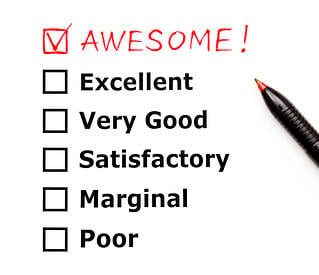Growth Insights for CEOs

Outsider Insights | From Hustle to System: Why More CEOs Are Rebuilding Their Sales Function
Outsider Insights
Across Chief Outsiders, we talk to hundreds of CEOs every month. In this new series, we explore the trends and challenges we’re hearing from these discussions – and what you can do if you’re facing the same issues in your business.
Recent Posts

Hire Slow and Fire Fast Part I
Sat, Jun 8, 2013 — Today's blog is by guest blogger Kevin Dincher. 25 years ago as a new manager, I had to fire an employee for the first time. When I inherited her, she was a long-time employee with a lengthy history of poor quality work, low productivity, negativity and troublesome relationships. Firing her was drawn-out and excruciating—but I learned early on the importance of hiring the right people—and not hanging on to the wrong ones.

Cracking the Code of Organizational Change
Sun, Mar 10, 2013 — It was 1996 when John Kotter first published Leading Change and told us that 70% of all major change efforts by businesses fail. Nearly two decades later there is little evidence that any improvement has occurred, and this 70% failure rate has become axiomatic in business development and change management circles. Despite some individual successes, change remains difficult—and few companies manage change successfully. Organization change is a strategic imperative in today’s fast-paced business environment. Unfortunately, in the pursuit of change and trying to be the best, CEO’s and their executive team frequently chase after the latest and greatest idea. They lose focus and become mesmerized by all the advice available in print and online about why companies should change, what they should try to accomplish, and how they should do it. This proliferation of recommendations often leads to failure. Cracking the Code of Change

D.A.R.E. to Grow
Wed, Feb 20, 2013 — Sometimes it is difficult for our organizations to take the steps necessary to grow – to change – to leave what is comfortable and strive for something more. We stop ourselves with questions like: How will my organization adapt to the changes? Can we handle the new challenges? Do we have the skills required to meet the new demands? Why should we upset what is already going well? It makes perfect sense for us to question. In fact, we wouldn’t be doing our jobs as leaders if we didn’t. At some point though, if we want to move forward, we must also move beyond the questions. We must take our own dare, if you will – and D.A.R.E. to grow. Here are some thoughts to get us started. D = Discover
Stay up-to-date with the latest from Chief Outsiders

The "Unconscious Incompetent" or Don't Be "Mr. Magoo"
Tue, Jan 1, 2013 — Do you remember Mr. Magoo? He was a cartoon character who used to cause disasters all around him and be totally unaware of them. Cars would overturn, store aisles would collapse, boats would crash and Mr. Magoo bumbled on his way, oblivious to it all. Some US business people act the same way when starting an international arm to their business.

The Importance of Authentic Service and Hospitality in Business
Tue, Oct 2, 2012 — What Makes Exceptional Service in Your Business? Recently I have been looking more closely at service — which factors contribute to great service in business and which elevate the quality of service to exceptional levels. I have considered both the objective, measurable components of service as well as the subjective — less tangible factors that focus on the specific relationship between those served and those serving. It's fairly simple for us to evaluate the concrete aspects of service. We, as marketers, preach and follow mantras of "what gets measured, gets done," and "if we can't measure it, we can't manage it." We rate and measure service quality with customer satisfaction research and Net Promoter scores. Measurement is, and will continue to be, a critical component of our understanding and responding to day-to-day performance in our businesses. In today's increasingly competitive market though, is evaluating only the easily measured variables sufficient? Is doing this alone enough to raise our customer service from great to exceptional? Does it ensure that our business performance is consistent with our vision, values and strategy?

The New CEO Mandate
Mon, Sep 17, 2012 — Guest post by Luis Gallardo, Author of Brands & Rousers: The Holistic System to foster High-Performing Businesses, Brands & Careers.

For Business Strategy, Timing Can Make All The Difference
Thu, Sep 6, 2012 — I got to thinking the other day about the importance of timing for successful business strategy. I can remember several instances when I had made or been part of business proposals that were not initially approved, but ended up being put into place and were very successful. Some were vehemently shot down and dismissed with words like “we will never do that!”, only to have us do the exact thing proposed sometime later. One example was a proposal to our CEO for expanding our product portfolio with a service line adjacent to our main business. Although we were the established market leader, we felt our future growth prospects were limited and that within a few years we would be faced with the scenario of trading customers with our competitors and raising prices in order to meet our financial goals. Our proposal was to launch a new product line, either through our own development or through an acquisition, which would serve as a source of future growth. We presented what we considered to be a compelling business case which detailed the large market opportunity, attractive margins, fit with our sales model and, most importantly, the pain points we could address for our customers. Although a departure from our main product, it was a fit with our core capabilities, and was a credible expansion for our business.

Jim Collins' Great By Choice: SMaC Develops Your "Brand"
Tue, Jul 17, 2012 — What we can learn from Jim Collins' Great By Choice I’m a huge Jim Collins fan (and look forward to seeing him at the Global Leadership Summit Aug 9/10). But I will admit that I haven’t read all of his books cover to cover. You know, you pull a few cool ideas then lose interest once the nuggets have been revealed. That was until Jim Collins' “Great By Choice." I couldn’t put this one down and I couldn’t get enough. Perhaps it’s having the perspective from his prior findings, models and perspectives to build upon. But I found “Great By Choice” to be Jim’s best and most practical piece yet. In summary, I found that this wonderful book shares simple, actionable truths applicable to businesses of all sizes. Use SMaC to Develop Your Brand - Practices Can Last Decades Like many, I use a Kindle and enjoy highlighting and making notes as I go. Then I go back and review the “greatest hits” to be sure I’m activating the concepts I had hoped to retain. Having just done that, I was again taken by the SMaC (Specific, Methodical and Consistent) model and approach with this summary: “A solid SMaC recipe is the operating code for turning strategic concepts into reality, a set of practices more enduring than mere tactics. Tactics change from situation to situation, whereas SMaC practices can last for decades and apply across a wide range of circumstances.” - Jim Collins' “Great By Choice” Chapter 6 Struck by the phrase “practices can last for decades,” because it’s perhaps an unspoken truth that the 10X (winning) companies build their reputations (their brands) by executing consistently, over time. Collins’ references to company recipes and even the U.S. Constitution Articles that don’t change from year to year, but may evolve with highly considered amendments, is a reminder of knowing what you stand for. In our firm, we find this so important we’ve made it a centerpiece of our approach with clients, specifically our Purpose-Driven Marketing. With a business’ purpose in place – a purpose that reflects their knowledge of the marketplace – one can make plans, decisions and take actions with a consistency that other companies can’t.

DRIVE: What Motivates Millennials?
Sat, Nov 26, 2011 — Recently, I spent a week working on a project about 90 minutes away and decided to make my commuting time "profitable" be listening to an audio book. Since I was driving, I chose "Drive: The Surprising Truth About What Motivates Us" by Daniel Pink. It was an inspired choice. It is especially relevant to those of us who work with today’s “Millennial” generation and since, in addition to my work as a Chief Outsider, I also teach an undergraduate course at Rutgers University, its message really resonated with me. Pink shares lessons from four decades of scientific research on human motivation. He explores what science knows about the subject and compares it with what business does — and does not do. He examines the three elements of true motivation — autonomy, mastery, and purpose — and offers simple ideas for putting these concepts into action.
.png?width=1500&height=398&name=CO_Corporate%20Logo%202021_4C_HOR_FNL-1%20(1).png)